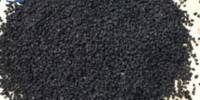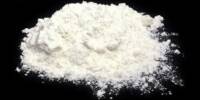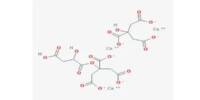BTO (barium titanate) is an inorganic substance having the chemical formula BaTiO3. Barium titanate appears white as a powder but becomes transparent when formed into huge crystals. The photorefractive effect is shown by ferroelectric, pyroelectric, and piezoelectric ceramic materials. It is applied to capacitors, electromechanical transducers, and nonlinear optics.
Barium titanate crystallizes in the perovskite structure, which consists of a titanium ion in the middle of a cube surrounded by oxygen ions and barium ions at the corners.
Properties
At certain temperatures, barium titanate exhibits spontaneous electric polarization that can be reversed by an applied electric field. This property makes it useful in capacitors, sensors, and actuators. It has a high dielectric constant, which means it can store electric charge efficiently. This property is exploited in capacitors for electronics.
- Chemical formula: BaTiO3
- Molar mass: 233.192 g/mol
- Appearance: White crystals
- Odor: Odorless
- Density: 6.02 g/cm3, solid
- Melting point: 1,625 °C (2,957 °F; 1,898 K)
- Solubility in water: Insoluble
- Solubility: Slightly soluble in dilute mineral acids; dissolves in concentrated hydrofluoric acid
The sol-hydrothermal method is a simple way to manufacture barium titanate. Barium titanate can also be produced by heating barium carbonate with titanium dioxide. The reaction proceeds through liquid phase sintering. Molten potassium fluoride can be used to create single crystals at temperatures of roughly 1100 °C. Other materials are frequently used as dopants, such as Sr, to make solid solutions with strontium titanate. It combines with nitrogen trichloride to yield a greenish or gray mixture that retains its ferroelectric characteristics.
Applications
Due to its unique combination of properties, barium titanate finds applications in multilayer ceramic capacitors (MLCCs), sensors, actuators, and as a component in electro-optical devices. It is a versatile material with significant applications across various technological fields due to its electric, dielectric, and optical properties.
















